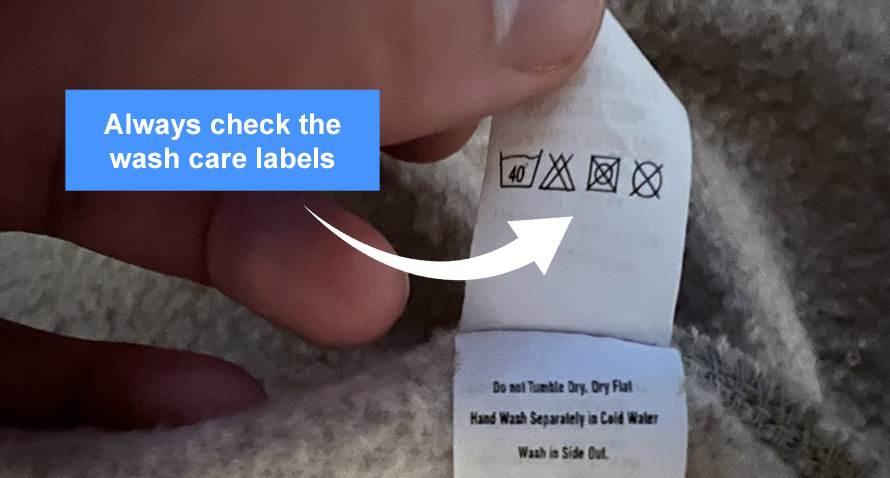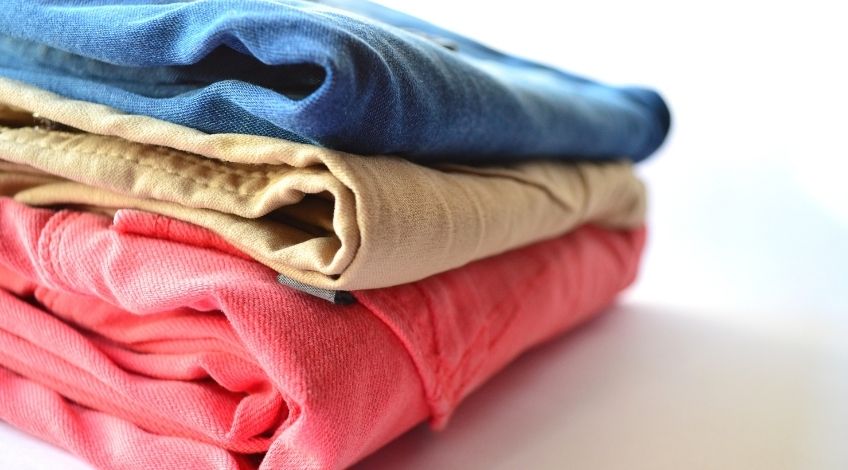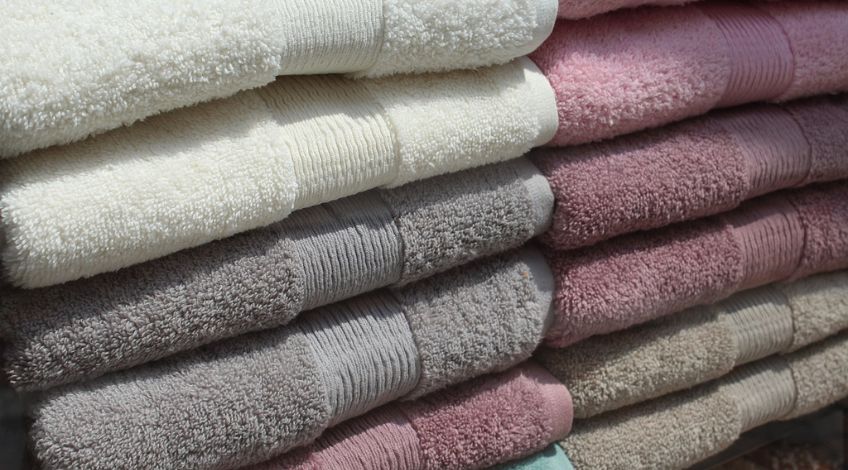
Common Laundry Mistakes You Need To Stop Right Now!
If you’re new to the world of laundry, or just want to make sure that you aren’t making any critical mistakes, this article is for you. In fact, we believe this guide should be mandatory reading for anyone who uses a washing machine/tumble dryer! While we can’t force that, we can encourage you to stick with this guide and read all the way to the end.
You’ll learn tips that’ll not only keep your favourite clothes free from damage – they’ll prevent your washer and dryer from unnecessary break down too!
So if you want to save your garments and save money, make sure you read all of these tips!
Not Checking The Wash Care Label
Not checking the wash care label is a very common mistake and one that’s easy to understand. If you buy a cotton t-shirt, it’s most likely the same as every other cotton t-shirt you’ve ever owned and washed, right?
Well, not necessarily, you see nowadays, clothing manufacturers blend fabrics together. So that cotton t-shirt might be blended cotton and polyester for example. As any good launderer knows, polyester has to be treated differently to cotton in the wash.
It could also be cotton blended with elastane (Lycra) which needs a different type of wash care.
Manufacturers put all of the relevant information on the wash care label to ensure you get the best from their clothes. Washing and drying those clothes according to the manufacturer’s instructions will make the clothes last longer, remain damage free and keep their shape and colour.

Using Too Much Detergent
You would think that when dealing with heavily soiled clothes, adding extra detergent would be a good thing. However, the extra detergent actually makes the laundry dirtier in the long run.
What happens is, the detergent doesn’t get fully rinsed out which leaves a sticky residue behind. This detergent residue is the perfect place for germs and bacteria to breed.
Your clothes are not only going to feel sticky or hard when the detergent dries, but also smell bad and be the harbourer of bacteria.
With that said, you need to be careful and make sure you use enough detergent because if you don’t use enough, the laundry will not get cleaned properly.
Always follow the instructions on the detergent packaging and use the correct amount of detergent for the size wash load you’re doing.
You May Also Be Using The Wrong Detergent
There are some fabrics that cannot withstand the strength of biological detergents. Whilst biological detergents are great for cotton, denim and towels it will ruin delicate fabrics like silk etc.
The enzymes in biological detergents can’t tell the difference between protein stains and natural fabrics like silk and wool. The detergent literally destroys these delicate fabrics just like disintegrating grease and oil stains.
And You May Have Poured Detergent Directly Onto Clothes
It can be tempting to simply pour detergent directly onto dirty clothes especially if they’re heavily soiled. However, detergents can stain fabrics especially if they have not been diluted.
Always use the detergent dispenser drawer or a detergent dosage ball in the drum.
Dealing With Stains In The Wrong Way
Whilst we’re talking about dirt and stains, leaving stains to dry on your clothes can make it impossible or extremely difficult to remove them.
Another problem when dealing with stains is scrubbing at them aggressively. Not only can this cause the stain to spread, it can also fade the fabric around the stain and even cause the fabric to wear out.
If the stain is still wet, you should gently dab at it with a cloth and wash it as soon as possible. If it’s already dried into the fabric, soak the item using a pre-soak to soften the stain up before washing in the machine.
Not Regularly Cleaning Your Washing Machine

Almost everyone makes this mistake, your washing machine deals with all manner of dirt, stains, germs and bacteria. How can you expect to get your laundry clean if your washing machine is dirty?
Most modern washing machines have a self clean cycle which you should run at least once a month. You should also be sure to clean the filter and detergent dispenser drawer, as well as around the door seal, drum and the exterior of the machine too.
The self clean or service wash as it’s sometimes called, uses the hottest wash cycle on your machine (usually 90 C). This ensures all germs and bacteria are removed and also helps to remove any detergent residue.
Not Sorting The Laundry Properly
This is probably one of, if not the most common laundry mistake and one we’ve all done at some point. It’s so easy to just throw all of the laundry into the drum of the machine and forget it.
We all lead such busy lives which is why we often neglect to sort our laundry properly. You need to separate light clothes from dark clothes and your heavy fabrics from your lighter, more delicates too.
Just remember that one red sock in with a load of white clothes can result in a load of pink clothes. It might take a few minutes to perform this task, but it could save many of your clothes from damage, colour runs etc.
Using Too Much Bleach
Bleach is a really powerful cleaning agent, but be careful not to use too much. If you add too much bleach to a wash load, the clothes could end up looking yellowed or a very distinct off-white.
If your whites need bleaching try to use oxygen bleach which is gentler on clothes than household chlorine bleach.
Using The Wrong Temperature
This is another really common mistake and is once again down to our busy lifestyles. We all get into the habit of always using the same wash cycle at the same temperature for every wash load we put into the machine.
The problem with that is many clothes nowadays can be washed at temperatures as low as 20 C whilst towels benefit from a hot wash cycle.
Hot water temperatures are the best for removing germs and bacteria commonly found on towels, bedding etc. A cool wash wouldn’t be too good for that task.
Having said that, washing many fabrics at 60 C would cause them to shrink, fade, colour bleed or even become misshapen. You should always check the care label and always wash your laundry at the correct temperature.
Using The Wrong Spin Speed
We all want our laundry to leave the washing machine with as little water in as possible to speed up drying times. However, some fabrics can’t handle a fast spin speed which could leave them damaged.
More robust items like denim and towels for example can be spun at high speeds to remove as much moisture as is possible.
Always use the correct spin speed for the fabrics being washed.
Washing Clothes Too Often

There are certain items of clothing that don’t need to be washed after every wear. Obviously work clothes, sportswear and gym clothes will need to be washed after every use.
Clothes that are only worn for a few hours of an evening don’t need to be washed as frequently. Over washing clothes is the main cause of them wearing out so fast.
So, if you want to keep your clothes looking good and lasting longer, don’t be so quick to wash them.
Using Too Much Fabric Softener
Using fabric softener was essential back in the early days of washing machines. The detergents were harsh and the mechanical action of the almost industrial washing machines and tumble dryers, meant clothes often felt rough and scratchy.
This was why fabric softener was invented. However with the advent of gentler detergents and gentler washing technology, fabric softeners are not really necessary any more.
Many of us use them out of habit or because it’s the way we were taught to wash clothes by our parents or grandparents.
The problem with using fabric softeners is they can build up in the fibres of the material and actually make the clothes feel harsh and scratchy.
This is because the chemicals dry onto the fibres of our clothes. This is more of a problem in some items like towels for example. The whole purpose of a towel is to remove moisture. It does this by absorbing the moisture into the fibres of the towel.
However, once there’s a build up of softener in the towel, the fabric softener coats the fibres and dries onto them leaving a waxy outer skin. This waxy skin prevents moisture from being absorbed which makes the towel pretty useless.
Then there’s the problem of the chemicals in softeners aggravating sensitive skin complaints like dermatitis or eczema.
Overloading The Drum
This is another common problem that we’ve all probably been guilty of at one time or another. You have a huge pile of clothes of similar colours and similar fabrics. So you just keep cramming the clothes into the drum even though you scrape your hand on the top of the drum.
This might appear to make sense because they’re all of a similar type and colour and you want them all washed today. However, not only is this likely to damage the washing machine (especially if it’s a front loader).
The clothes are not all going to get washed if there’s too much in the drum. In fact, those stuck in the middle of the pile might not even get wet.
Or You Could Be Not Washing A Full Load
The flip side of that is not washing enough items in each wash load. Washing machines are responsible for around 20% of all water usage in the average home, if you’re using a full wash cycle to wash one or two items, it could be costing you more than you think.
If you’re on a water meter there’s the cost of electricity and the cost of water to consider. With energy prices rising almost every week, it makes sense to wait until you have a full (not over full) load. This will save you money and be less detrimental to the environment.
Neglecting To Close Zips & Catches
If you’re washing jeans, trousers or skirts that have a zipper, always remember to fasten it fully before putting the garment into the drum of the machine. The teeth on zips can catch on other items in the drum as they rotate and cause tears, rips and snags.
This is also true of bra catches which can do similar damage. We would also recommend placing bras in mesh laundry bags to prevent them causing any damage or becoming damaged.
Not Unbuttoning Clothes
Another common mistake is leaving buttons done up when washing shirts etc. As the items are agitated in the drum, they can get caught up with other items. This can lead to buttons becoming ripped off and button holes getting torn.
All of which could be avoided if the buttons were undone before the items were put in the drum.
Washing Towels With Clothes

Towels are great for drying our skin because of the way they’re designed. They have tiny loops of fabric which catch onto the water and remove it from our skin.
If you put towels in the washing machine with your clothes, those tiny loops catch on the fabric of your clothes. This leads to the fabric of your clothes wearing down. Which leads to your clothes wearing out and means they don’t last as long as they should.
Not Emptying Pockets
This is another common mistake that can cause a whole load of problems. There are harsh metal objects like keys, nails and screws that could cause damage to your clothes and also damage the drum of your washing machine.
Then there are paper tissues which could end up disintegrating in the wash and covering your clothes with minute white particles that can be almost impossible to remove.
Other items like crayons and lipsticks can melt and stain your clothes.
Putting Elastic In The Dryer
Underwear and swimsuits often contain elastic which can become ruined when exposed to heat. Putting these items in the dryer could cause them to stretch and become unfit for wear.
Putting Synthetics In The Dryer
Many synthetic fabrics can become shrunken, misshapen or even melt if exposed to high temperatures like those found in a tumble dryer.
Always consult the wash care label before drying any items.
Not Cleaning The Lint Filter
Every time you dry clothes in the tumble dryer, they lose fibres. These fibres get caught in the lint filter which can fill up very quickly.
You need to empty the lint filter regularly to prevent it from filling up. Failure to do so could lead to your clothes not getting dry or in extreme cases, the dryer catching fire.
Tumble Drying Clothes With Visible Stains
If you notice a stain on an item of laundry, never put it into the dryer. You could literally bake that stain into the fabric. This would make it impossible to remove.
Never Leave Wet Clothes In The Drum Of The Washer
Once the washing machine has finished its full cycle, you should remove the laundry immediately. This will prevent any germs, bacteria or mould spores from breeding in the damp conditions.
If you fail to do this, the clothes will start to smell damp and musty and will need to be rewashed.
Never Leave Clothes In The Drum Of The Dryer
If you were to leave clothes in the drum of the dryer after it has finished, they are more likely to get wrinkled and creased. If this does happen, it is possible to remove these wrinkles by putting a damp towel in the dryer and turning it on for a few minutes.
Don’t Close The Door On Your Washing Machine When Not In Use
After the wash programme has completed and the laundry has been removed from the drum, it’s automatic to just shut the door. However, you should always leave the washing machine door open on front loader machines.
This is to allow the interior to dry out which prevents germs, bacteria mould and mildew from forming. This will ensure that your washing machine doesn’t smell bad. Which in turn, helps your laundry to smell fresher too.
SEE ALSO: What’s The Best Washing Machine Settings For Towels
Frequently Asked Questions
One of the most common laundry mistakes that would ruin clothes is to not read or follow the advice on the wash care label.
Not emptying pockets before putting clothes in the washing machine can ruin the machine. Metal objects could damage the drum, clog the filter and cause damage to the components in your washing machine.
The proper way to sort your laundry is by colour and by fabric. You should always wash clothes of a similar colour together as well as ensuring that similar fabrics are washed together too.




